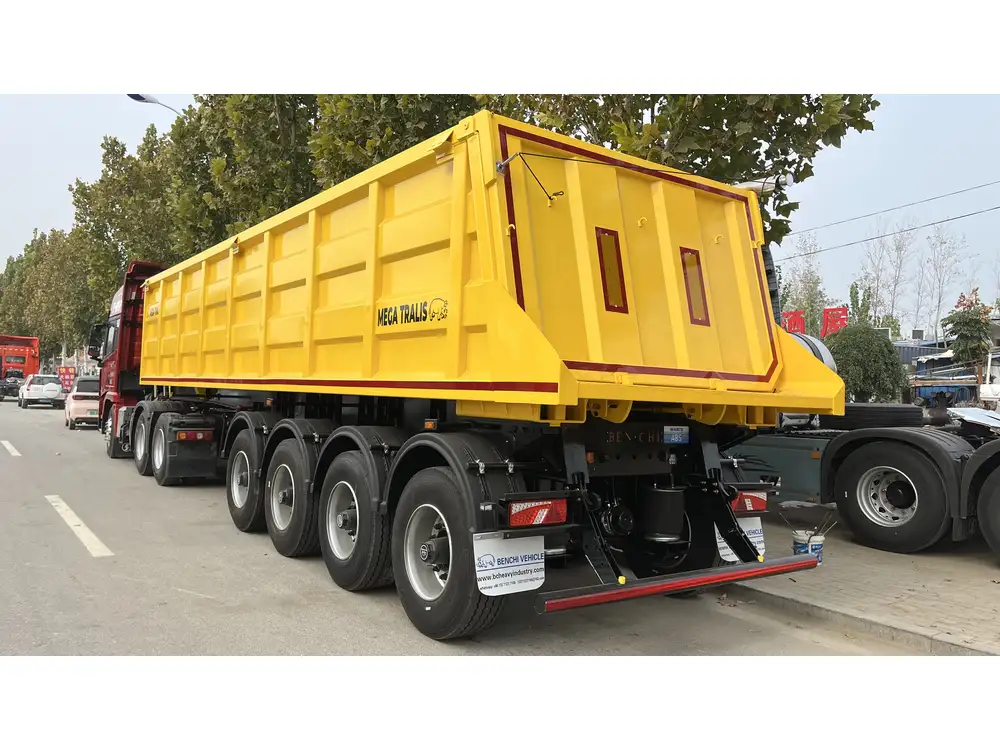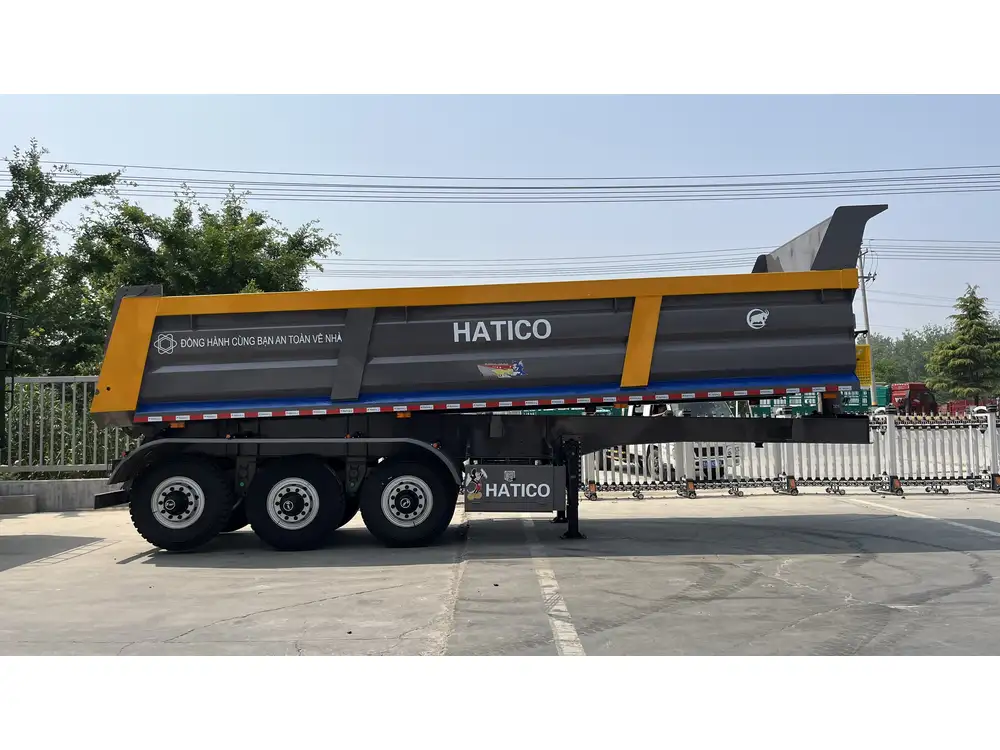When it comes to transportation solutions, choosing the right trailer is paramount. Among the myriad of options available, a 16-foot flatbed trailer stands out for its versatility and practicality. However, one of the most frequently asked questions about these trailers is, “How much does a 16-foot flatbed trailer weigh?” This article aims to provide a comprehensive analysis of this essential equipment, diving deep into its weight, influencing factors, and additional considerations for potential buyers or users.
Weight Specifications and Classifications
Weight Range of 16-Foot Flatbed Trailers
The weight of a 16-foot flatbed trailer can vary significantly, influenced by various factors such as the materials used, the design, and any additional features. On average, you can expect the weight to fall within the range of 1,500 to 3,000 pounds.
| Type of Trailer | Average Weight (lbs) | Notes |
|---|---|---|
| Basic Steel Flatbed | 1,800 – 2,200 | Conventional trailer structure without extras. |
| Aluminum Flatbed | 1,500 – 2,000 | Lighter and more durable option for frequent use. |
| Heavy-Duty Flatbed with Ramps | 2,500 – 3,000 | Enhanced structure for heavy loads and durability. |

Empty vs. Loaded Weight
The empty weight of a trailer is pivotal as it contributes to the overall towing capacity. Conversely, the gross vehicle weight rating (GVWR) considers both the trailer’s weight and the maximum load it can carry, providing insights into its total carrying capacity. The discrepancy between empty and loaded weight can be significant:
- Empty Weight: Approximately 1,500 to 3,000 pounds based on the trailer type.
- Typical Load Capacity: Generally ranges from 3,000 to 9,000 pounds, again influenced by trailer design and materials.
Understanding these weights is crucial, particularly when towing with specific vehicle capacities.
Factors Influencing Trailer Weight
Material Composition
The materials used in the construction of a flatbed trailer significantly influence its weight. For instance:
- Steel Trailers: More durable and robust but heavier, typically ranging from 1,800 to 2,200 pounds.
- Aluminum Trailers: Lighter and resistant to corrosion, making them preferable for users who prioritize weight savings for fuel efficiency.

Design and Features
Features that enhance functionality often increase weight. For example:
- Side Rails and Toolboxes: Additional side rails can add weight but improve cargo security.
- Ramps and Winches: These features can increase the weight but can also facilitate loading and unloading.
Axle Configuration
The number of axles on a trailer impacts its weight capacity, stability, and weight. Common configurations include:
- Single Axle: Suitable for moderate loads; typically weighs less.
- Dual Axle: Allows for increased weight capacity; generally adds some weight to the trailer.
| Axle Configuration | Typical Gross Weight Capacity (lbs) | Use Cases |
|---|---|---|
| Single Axle | Up to 3,500 | Light-duty use, landscaping, small machinery. |
| Dual Axle | 5,000 – 10,000 | Heavy-duty applications, farming, construction. |
Calculating Weight for Towing Compliance
Understanding how the weight of a 16-foot flatbed trailer interacts with your towing vehicle’s capacity is vital.

GVWR and Payload Capacity
To ensure safe towing practices, consider the following formula: [ \text{Payload Capacity} = \text{GVWR} – \text{Trailer Weight} ]
For example, if a 16-foot flatbed trailer has a GVWR of 6,000 pounds and weighs 2,000 pounds, the payload capacity will be: [ \text{Payload Capacity} = 6,000 – 2,000 = 4,000 \text{ pounds} ]
Towing Vehicle Specifications
Always verify the towing capacity of your vehicle before transporting any load. It is crucial to reference:
- Manufacturer’s Towing Capacity: Identified in your vehicle’s manual.
Compliance with local regulations regarding trailer weights and towing capacities is also essential for legal and safety considerations.
Common Mistakes to Avoid
Underestimating Weight: Always calculate your total weight, including the load and any accessories or tools you may carry.
Neglecting Towing Limits: Ensure that your towing vehicle’s limitations are never exceeded, as this can lead to dangerous situations on the road.
Ignoring the Load Distribution: Properly distribute the load across the trailer to maintain stability during transport.

Expert Tips for Managing Weight
Choose Lightweight Materials: Opt for aluminum if feasible, to improve fuel efficiency and towing comfort.
Be Mindful of Add-Ons: Assess whether additional features are necessary, as they can substantially increase weight.
Regular Maintenance: Check the trailer and towing system regularly to ensure that all components are functioning properly, thereby avoiding unforeseen weight issues.
Real-World Applications
Industry Utilizations
The adaptability of a 16-foot flatbed trailer ensures its usefulness across various industries:
- Construction: Transport of machinery, tools, and materials.
- Landscaping: Moving plants, equipment, and other landscape materials.
- Farming: Hauling equipment, hay bales, and livestock.

Personal Uses
Homeowners also find 16-foot flatbed trailers valuable for:
- Moving: Transporting furniture or large appliances.
- DIY Projects: Hauling materials for renovation or construction tasks.
Conclusion
In summary, understanding the weight of a 16-foot flatbed trailer is pivotal for effective and safe transportation solutions. Ranging from approximately 1,500 to 3,000 pounds, with variations depending on material, design, and features, it is crucial for users to consider several critical factors.
By recognizing the nuances of weight, including empty and loaded capacities, axle configurations, and the impact of materials, prospective buyers can make informed decisions tailored to their specific needs. Ultimately, careful planning, awareness of towing regulations, and maintaining proper load distribution will not only enhance safety but also promote efficient utilization of resources.
This comprehensive insight into the weight dynamics and practical applications of 16-foot flatbed trailers aims to empower users as they navigate the complexities of trailer ownership and utilization.



